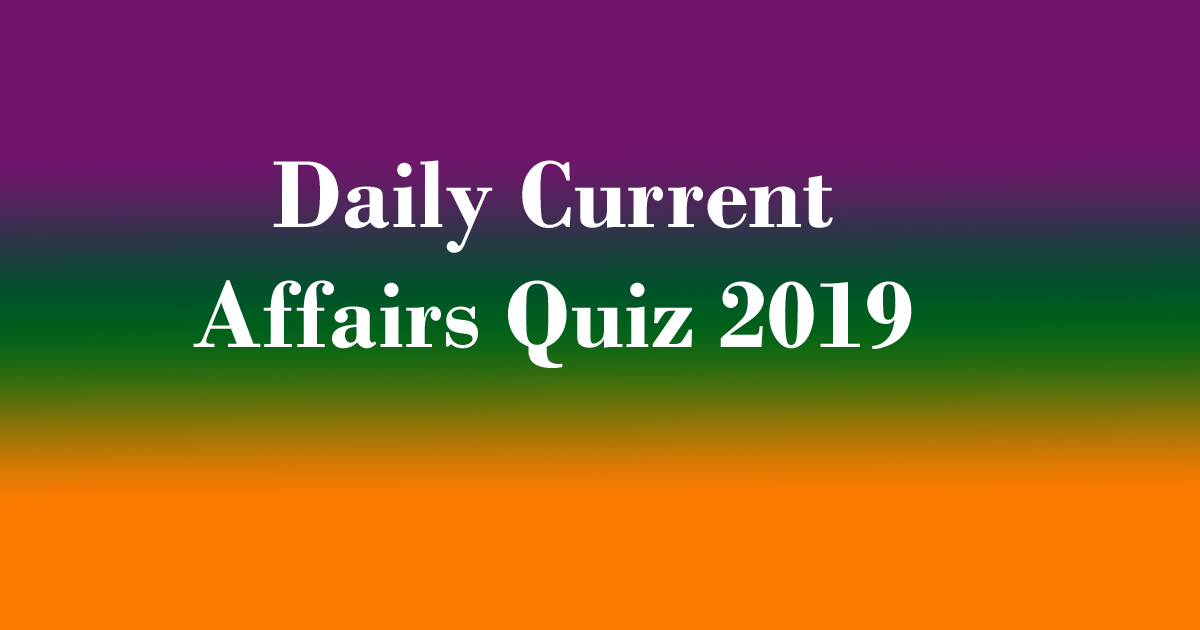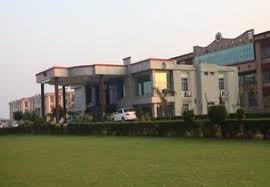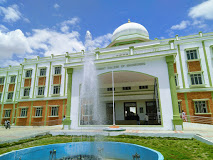
Prime Minister Narendra Modi and his Bhutanese counterpart Lotay Tshering held a wide ranging talks during which they discussed steps to further expand the bilateral partnership across several sectors. The two nations signed 10 Memoranda of Understandings (MoUs) to infuse new energy in their ties.
Daily Current Affairs Quiz 2019
“We had a comprehensive meeting, where we deliberated on the relations between India and Bhutan. There is great scope to further improve economic and cultural ties between our nations,” Prime Minister Modi said.
Modi is here on his second visit to Bhutan and the first since his re-election in May 2019. He inaugurated the Mangdechhu hydroelectric power plant and also launched stamps to commemorate five decades of India-Bhutan Hydropower cooperation.
“I am very happy to come to Bhutan at the beginning of my second term,” Modi said in a joint press statement after delegation-level talks with his Bhutanese counterpart at the historic Simtokha Dzong.
The two countries signed 10 MoUs in the field of space research, aviation, IT, power and education.
Modi also launched the RuPay Card in Bhutan by making a purchase at Simtokha Dzong, built in 1629 by Shabdrung Namgyal. This place functions as a monastic and administrative centre and is one of the oldest dzongs in Bhutan.
“I am very happy that today we have launched RuPay card in Bhutan. This will further enhance our relationship in digital payments, and trade and tourism. Our shared spiritual heritage and strong people-to-people relationship are key of our relations,” Prime Minister Modi said.
On increasing the currency swap limit for Bhutan under the SAARC currency swap framework, Modi said India’s approach is “positive”.
He said an additional $100 million will be available to Bhutan under a standby swap arrangement to meet the foreign exchange requirement.
The two leaders also unveiled e-plaque of the interconnection between India’s National Knowledge Network and Bhutan’s Druk Research and Education Network.
“It is a privilege for India to be a major partner in the development of Bhutan. India’s cooperation in Bhutan’s five-year plans will continue,” he said.
The two leaders jointly inaugurated the Ground Earth Station and SATCOM network, developed with assistance from the Indian Space Research Organisation (ISRO) for utilisation of South Asia Satellite in Bhutan.
Modi said India is committed to facilitate Bhutan’s development through the use of space technology. India will enhance the communication, public broadcasting and disaster management coverage in Bhutan, he said.
He said the collaboration and relationship between Royal Bhutan University and IITs of India and some other top educational institutions are in line with today’s requirements for education and technology.
“I believe that India and Bhutan will remain a unique model of relations between two countries in the world,” he said.
On his part, Prime Minister Tshering said India and Bhutan may vary in size but their beliefs, values and motivation are common.
“On his (Modi) first visit to Bhutan, I remember him saying that Bhutan and India are close not because we have open borders, but because we have opened our hearts to each other. Your visit this time shows how much you meant it,” he said.
Modi also planted a sapling at Simtokha Dzong.
Earlier, Prime Minister Modi inspected a guard of honour during his ceremonial welcome at Tashichhodzong Palace here.
Prime Minister Modi received a red-carpet welcome at the Paro airport where he was received by the Bhutanese prime minister.
Waving the Indian tricolour and the Bhutanese flags, people lined up along the route from Paro to the capital city Thimphu to welcome Prime Minister Modi, who is in Bhutan on a two-day visit. Prime Minister Modi will also address young Bhutanese students at the prestigious Royal University of Bhutan.





